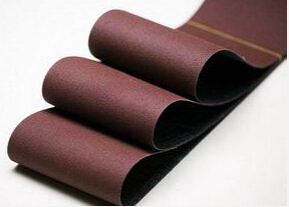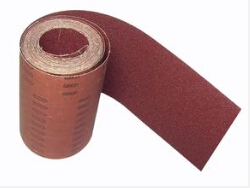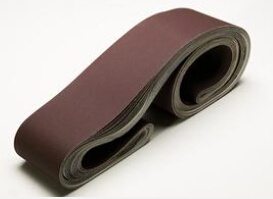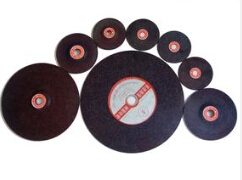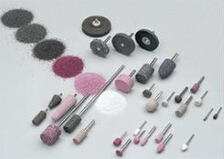Application of Silicon Carbide and Carburant in Cast Iron Works
Zhongsen Editor 2020-09-18Silicon Carbide is a compound composed of one carbon atom and one silicon atom, of which silicon accounts for 70% and carbon occupies 0% (by weight). It was accidentally discovered by Edward G Acheson while making synthetic diamonds. Because it is very hard and can cut glass, metal and other materials, its initial use is as an abrasive. Since it does not oxidize at almost any temperature, it can be used as a refractory material. Because it is also very stable at high temperatures, it has been widely used as a filler in kilns. Because it can resist the erosion of slag, it can be used as slag line brick for aluminum smelting furnace and blast furnace. Because it dissolves in the presence of slag, carbon atoms and silicon atoms will be released into charged ions (C-4 and Si +4), so it is also an effective deoxidizer widely used in electric furnace steelmaking . When it is added to gray iron, ductile iron or malleable cast iron, it not only easily dissolves, but also allows carbon and silicon to enter the melt in the form of alloys. When the temperature is lower than 1620°C, its carbon will act as a deoxidizer, so that less stable oxides such as FeO and MnO will be reduced by the reaction of SiC+FeO=Si+Fe+CO. When the temperature is higher than 1620 ℃ (for example, steelmaking), silicon will take on all the deoxidation tasks, while carbon acts as a carburizing agent, and its yield can reach 100%. Coreless induction melting of iron is the main application area of silicon carbide. In the United States, about 95% of coreless induction furnaces use SiC as the main silicon source. In terms of gray iron, ductile iron and malleable iron, SiC+FeO=Si+Fe+CO is used to reduce the content of FeO and MnO in the slag through SiC.
Because of the presence of FeO, the melting point of any slag can be reduced, so at any given temperature, because of the decrease of the melting point of slag, more slag will become liquid. For example, when the FeO content in the slag is 10%, its melting point will be 1350-1400°C, and under the vigorous stirring action of the coreless induction furnace, this liquid slag will be "homogenized" in the melt. Thus leaving millions of very small slag particles in the melt, many of the surface defects of the casting are such high-fluidity high FeO and MnO slag (commonly referred to as manganese silicate slag) brought into the mold Caused. If SiC is added to reduce the FeO content of this slag to 1 or 2%, its melting point will be increased to 1500-1550°C. Then, at the usual tapping temperature (1500-1550°C), this slag or It remains solid, or only a small amount becomes liquid, so that a larger monomer is retained in the furnace, which makes the slag particles easily removed due to the higher floating speed, and makes them carried The chance of casting defects and casting defects is greatly reduced.
The existence of very small FeO-SiO2 inclusions (iron olivine) in the molten iron is the main reason for reducing the fluidity of the molten iron, increasing the tendency to shrink and increasing the white mouth, which is especially true for ductile iron. Therefore, reducing its amount in molten iron can eliminate the tendency to increase shrinkage and white mouth.
Since silicon carbide dissolves rather than melts in molten iron, it takes longer to enter the molten iron than FeSi. Due to the longer action time, the decay time increases. Therefore, in terms of ductile iron, although the furnace often does not leave room for silicon or only a little room, many foundries have found that it is economically cost-effective to add at least 3-4kg/T of SiC to the charge of. The metallurgical effects they have seen are: fewer white mouths, fewer defects caused by slag, more graphite spheres, less shrinkage tendency, and longer recession time. This is partly due to the replacement of ferrosilicon containing aluminum and carburizers with higher N and S content by SiC with low residue content.
Another application of SiC in ductile iron is the "pre-pregnancy" effect of pure magnesium treatment. One of the disadvantages of pure magnesium treatment is the increased tendency to produce shrinkage and carbides. Studies abroad have shown that adding 2kg/TSiC to the treatment package is the most effective way to eliminate this metallurgical problem.
Since the content of FeO in ductile iron slag is higher than that in gray iron or vermicular iron slag, the problem caused by fluid slag on ductile iron is more serious than that on gray iron or vermicular iron. Therefore, The effect of adding SiC to ductile iron will be better.
In terms of gray iron and vermicular iron, the metallurgical effects observed in foreign foundries are basically the same as those observed in ductile iron: the number and fluidity of slag are reduced, the number of eutectic clusters is increased, and the tendency to white mouth is reduced. Decay time increases. In addition, foreign gray iron and vermicular iron foundries often have enough room for a certain amount of SiC in the charge. The most common dosage is: gray iron 10-15kg/T, vermicular iron 5-10kg/T. China is a large silicon carbide production country, with an annual output of more than 200,000 tons, of which the output of metallurgical grade silicon carbide accounts for about 1/3. At present, it is mainly used as a deoxidizer for electric furnace steelmaking in China. less.
Many cast iron plants in China, especially ductile iron plants, have defects caused by slag to varying degrees, and are also facing a problem of how to meet increasingly high quality standards and increasingly fierce cost competition, so In addition, silicon carbide, which combines deoxidizer and carburizer, and is rich in resources, will surely become a very important tool for many cast iron factories in China to reduce slag defects, improve casting quality, and reduce costs.
In addition, with the increasingly perfect and promotion of the production of ductile iron technology using high-magnesium alloy cored wire, the work of partially or completely replacing ferrosilicon with silicon carbide, which can increase carbon and silicon, and can also play a pre-inoculation role, will surely be Many iron foundries mentioned the schedule because it not only improves the quality of ductile iron, but also further reduces production costs.
In short, the application of silicon carbide in my country's cast iron plants is not only imperative, but also the general trend.
Carburizing agent belongs to the additional steelmaking and ironmaking carbonizing raw materials. High-quality carburant is an indispensable auxiliary additive for the production of high-quality steel. The metallurgical quality of molten iron is completely different with the same chemical composition, different smelting processes, different ingredients and ratios. To obtain a good carburizing effect, the electric furnace uses carbon-enhancing technology, and the cupola uses high-temperature precision casting technology.
The influence of carburant on precision casting products is mainly in three aspects.
1. Under the condition of high carbon content, in order to obtain high-strength gray cast iron castings, the process of smelting uses full scrap steel plus carburizing agent, which makes the molten iron more pure and produces high performance casting materials.
2. Iron liquid carbon increasing technology, especially in electric furnace smelting process, can increase graphite crystal nucleus and reduce iron liquid oxidation.
3. Carbon addition is the best measure to prevent or reduce the tendency to shrink. Due to the expansion of graphitization during the solidification of molten iron, good graphitization reduces the tendency of molten iron to shrink.
Carburizing agent used in casting can greatly increase the amount of scrap steel, reduce the amount of pig iron or not. For the feeding method of electric furnace smelting, the carburant should be put in along with the scrap materials such as scrap steel. The addition of a small amount can be added to the surface of the molten iron. However, it is necessary to avoid large-scale feeding of molten iron to prevent excessive oxidation resulting in a situation where the carbon increase effect is not obvious and the carbon content of the casting is insufficient. The amount of recarburizer added depends on the ratio of other raw materials and carbon content. For different types of cast iron, choose different types of carburizers as needed.

